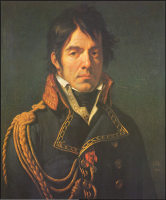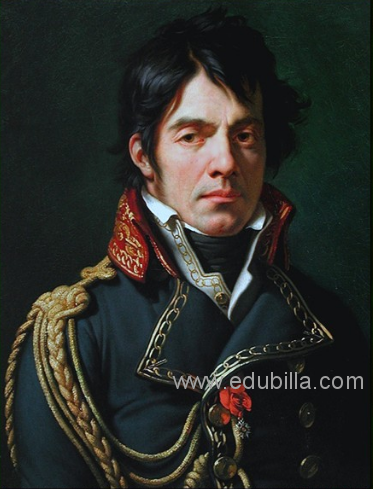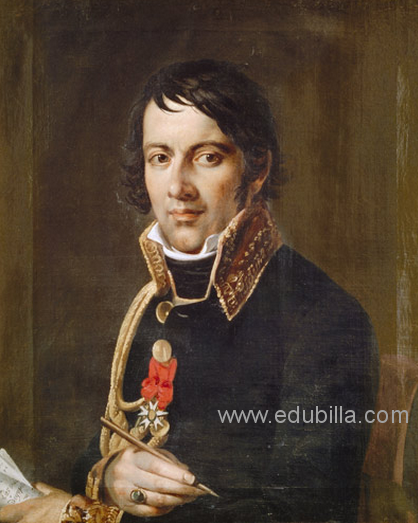










Dominique Jean Larrey (French: [lar?]; 8 July 1766 – 25 July 1842) was a French surgeon in Napoleon's army and an important innovator in battlefield medicine.
Biography
Larrey was born in the little village of Beaudéan, in the Pyrenees to bourgeois parents, who later moved to Bordeaux. Larrey was orphaned at the age of 13. He was then raised by his uncle Alexis, who was chief surgeon in Toulouse. After serving a 6-year apprenticeship, he went to Paris to study under the great Desault, who was chief surgeon at the Hôtel-Dieu de Paris. His studies were cut short by war.
Larrey was surgeon-in-chief of the Napoleonic armies from Italy in 1797 to Waterloo in 1815. During this time, he initiated the modern method of army surgery, field hospitals and the system of army ambulance corps. After seeing the speed with which the carriages of the French flying artillery maneuvered across the battlefields, Larrey adapted them as Flying Ambulances for rapid transport of the wounded and manned them with trained crews of drivers, corpsmen and litterbearers. Larrey also increased the mobility and improved the organization of field hospitals, effectively creating a forerunner of the modern MASH units. He established a rule for the triage of war casualties, treating the wounded according to the seriousness of their injuries and urgency of need for medical care, regardless of their rank or nationality. Soldiers of enemy armies, as well as those of the French and their allies, were treated.
Larrey was made a Commandeur of the Légion d'honneur on 12 May 1807. He was a favorite of the Emperor, who commented, “If the army ever erects a monument to express its gratitude, it should do so in honor of Larrey”, he was ennobled as a Baron on the field of Wagram in 1809. In 1811, Baron Larrey co-led the surgical team that performed a pre-anesthetic mastectomy on Frances Burney in Paris.Her detailed account of this operation gives insight into early 19th century doctor-patient relationships, and early surgical methods in the home of the patient.
At Waterloo in 1815 his courage under fire was noticed by the Duke of Wellington who ordered his soldiers not to fire in his direction so as to “give the brave man time to gather up the wounded” and saluted “the courage and devotion of an age that is no longer ours”. Larrey was taken prisoner by the Prussians and condemned to death. However, he was recognized by one of the German surgeons, who pleaded for his life. Perhaps partly because he had saved the life of Blücher's son when he was wounded and taken prisoner by the French, he was pardoned, invited to Blücher's dinner table as a guest and taken back to France under escort. He devoted the remainder of his life to writing and a civilian medical career.
He died on July 25, 1842 in Lyon.
Often considered the first modern military surgeon, Larrey's writings are still regarded as valuable sources of surgical and medical knowledge and have been translated into all modern languages.
His statue in bronze, as sculpted by David d'Angers in 1843, is standing in the courtyard outside the Val-de-Grâce military hospital.
His son Hippolyte was surgeon-in-ordinary to the emperor Napoleon III.

